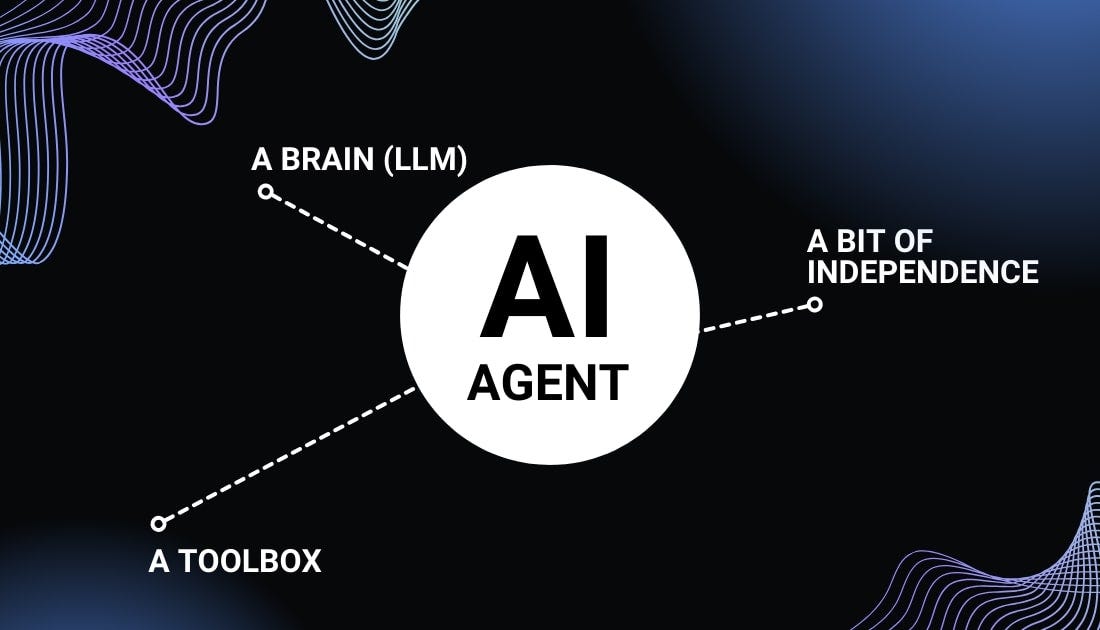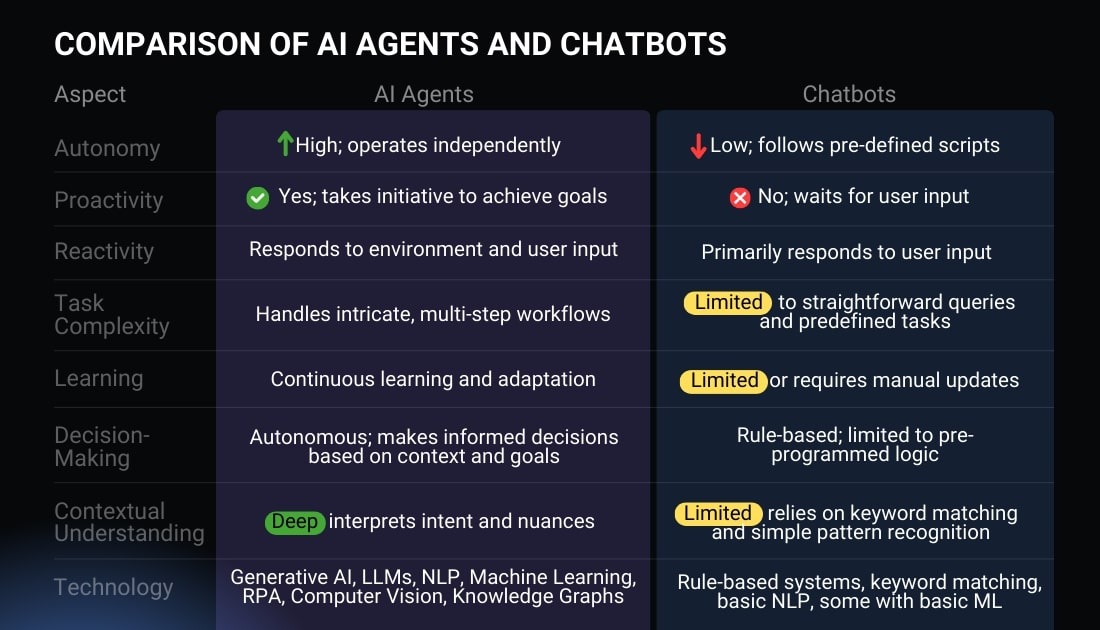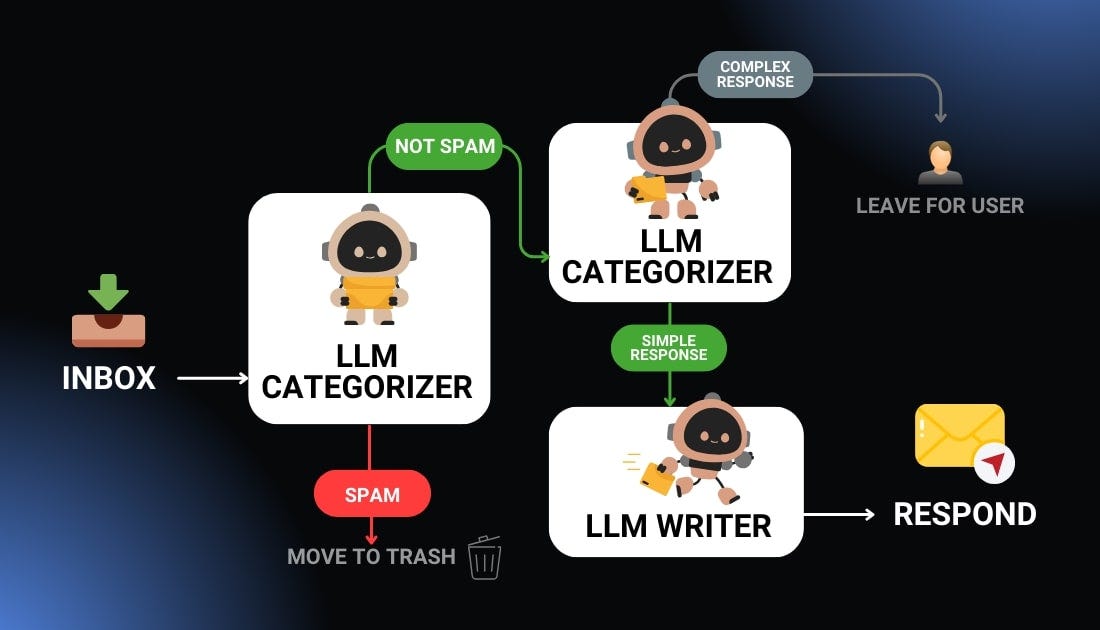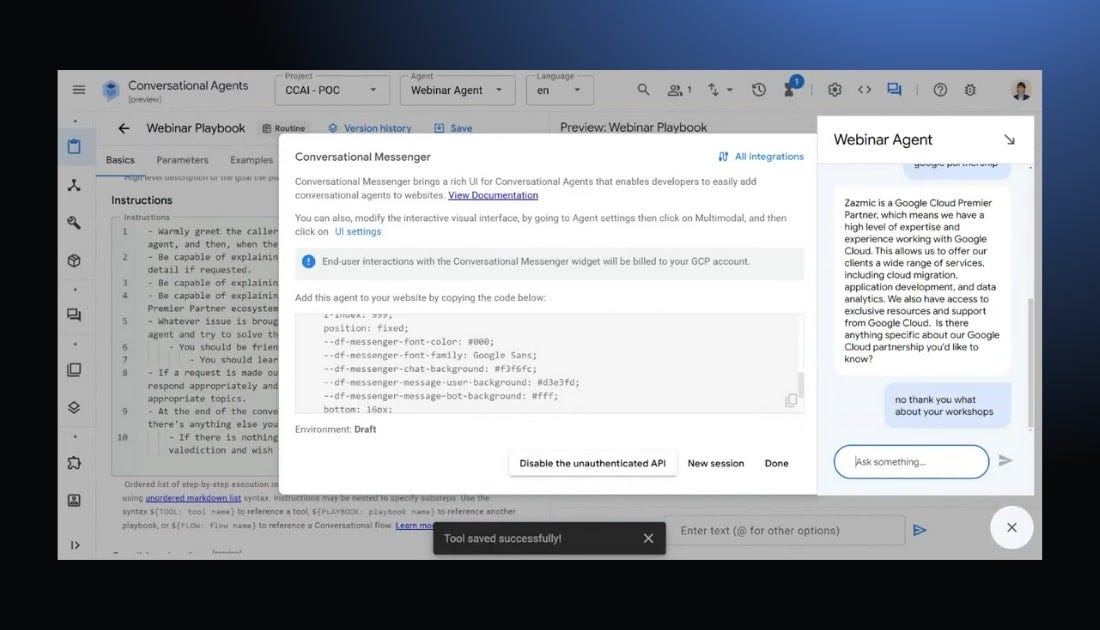AI Agents Are Not Just Chatbots - Here’s What You’re Missing
We Need to Talk About AI Agents
Let’s get one thing straight: AI agents are not just chatbots with a fancy hat.
If the term “AI agent” has been floating around your feed, sounding vaguely impressive but frustratingly fuzzy, you're not alone. And if you’re a CEO, CTO, or business owner thinking, “Why should I care?” — read on.
Spoiler alert: you’ll care. You’ll care a lot.
What Are AI Agents, Really?
You ask five AI geeks, you might get five slightly different answers. OpenAI talks about LLMs with tools. Hugging Face adds "planning." Anthropic throws in "autonomy." Everyone's got their angle.
Who’s right? All of them. And none of them. What matters is what they do, not how we label them.
So let’s simplify.
The 3 Pillars of Every AI Agent
Every functional agent has three things going for it:
1. A Brain (LLM)
GPT-4, Claude, Gemini – all these are the thinkers. They understand language, reason through problems, and generate responses.
2. A Toolbox
Unlike your average chatbot that just talks, agents do. They can search the web, run code, check databases, send emails, connect to APIs… almost anything. They interact with the digital world, and sometimes the real one. This isn't just chat; it's action.
3. A Bit of Independence
Agents don't always need step-by-step instructions. They can plan, break down tasks, maybe even reflect on their work, and try again if it's not right. They have a goal and can figure out how to get there, navigating bumps along the way. They even surprise you. In a good way.
Why AI Agent Isn’t Just a Chatbot in New Shoes
Remember when everyone added a chatbot to their website and expected customer service to run smoothly?
Yeah… that didn’t exactly happen, and many businesses learned a hard lesson. Those early bots could chat, sure. They could answer FAQs. But they couldn't do much. Chatbots couldn't integrate deeply, couldn't handle complex tasks, couldn't deliver that juicy ROI everyone hoped for. They lacked memory, planning, and crucially, those tools.
Agents don't.
Now, see the difference: A chatbot is like a microwave. Push a button, get a result. An agent is more like a chef in a restaurant: You give it a goal, and it figures out how to get it done.
From Chatbot to Agent: The Beauty of LLM Workflows
At the heart of an AI agent is what we call an LLM workflow.
This isn’t a back-and-forth Q&A. It’s a decision tree, a task manager, a planner, and an executor rolled into one.
Imagine telling an agent, “Handle my inbox.” A chatbot might summarize an email if you ask it. An agent workflow could:
Look at an incoming email.
Decide if it's spam (Step 1, maybe a fast, cheap model).
If not spam, assess its urgency and complexity (Step 2, another model).
Draft a reply based on context (Step 3, your LLM).
Maybe even check it against your company style guide (Step 4, a specialized tool or model).
See the difference? It's proactive. It's multi-step. It's smart.
Real-World Examples
Theory is nice. Results are better. So let’s make this real and see AI Agents in action.
Crédit Agricole’s AI Agent for Customer Service
Crédit Agricole Bank Polska has implemented an AI agent to support its customer service team by automating document analysis, classification, and response generation.
Did the company achieve its goal?
They saw a 50% reduction in document processing time.
AI managed 62% of certificate applications and 32% of account closure applications
The company saved the customer service team over 750 hours per month.
A nice bonus: both the customers and team members said they were more satisfied.
Why This Matters for Your Business
Integrating AI agents into customer service operations can enhance efficiency and accuracy, reduce operational costs, and improve customer satisfaction.
Mayo Clinic’s AI-Powered Diagnostic Agent
Now let’s talk healthcare.
Mayo Clinic has integrated AI agents into its diagnostic processes. They analyze medical imaging scans, flag abnormalities, and identify high-risk patients for early intervention.
According to Mayo Clinic's radiologist, Ajit Goenka, AI helps diagnose pancreatic cancer almost a year before its clinical presentation.
To be able to detect and identify disease at a stage where it is beyond the capabilities of human perception, that’s really the holy grail of medicine.
— Ajit Goenka, M.D.
Why This Matters for Your Business
In sectors where accuracy and speed are critical, AI agents can augment human expertise, reduce errors, and, in healthcare specifically, strongly improve patient outcomes.
Zazmic’s Customer Support Agent
At Zazmic, we built an AI-powered support agent using Google Cloud tech and LLMs.
What does it do?
Handles complex service questions
Manages live chat and phone support
Explains cloud services in plain English
Redirects conversations toward conversions
Smart, friendly, on-brand. No burnout, and it runs 24/7. Try doing that with your human team.
Why Your Business Needs It:
You want lower support costs? You want faster issue resolution? You want 10x scale without 10x headcount?
AI agents are how you get there. They’re more than chat. They’re your new workforce layer. But only if you build them right.
Stop Missing Out, Start Doing
Chatbots were a nice start. But agents? They’re the next leap. They plan. They learn. They act. And most importantly, they deliver results.
So no, AI agents are not just chatbots. They’re the operating system for the next phase of intelligent business.
Want to See It in Action?
Join our free AI workshop and learn how to build your first AI agent here
You’ll walk away knowing exactly how to build, deploy, and scale AI agents tailored to your business needs. No fluff, no code (unless you want it), just results.
See you next time,
Yann








Very clear and well-written
Thank you for putting this together!